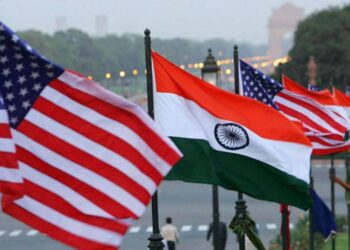In a major breakthrough in one of India’s most high-profile terrorism cases, Tahawwur Hussain Rana, a Pakistani-born Canadian businessman, has been extradited from the United States to India. The extradition is being hailed as a critical step in India’s long-standing pursuit of justice for the victims of the 2008 Mumbai terror attacks, often referred to as 26/11.
Rana, 64, is now in the custody of India’s National Investigation Agency (NIA) and is expected to face trial for his alleged role in the planning and facilitation of the attacks that left 166 people dead and over 300 injured.
The Mumbai Attacks: A Reminder of Terror on Indian Soil
On November 26, 2008, ten heavily armed men from the Pakistan-based militant group Lashkar-e-Taiba (LeT) carried out a series of coordinated assaults across Mumbai. The targets included the Taj Mahal Palace Hotel, the Oberoi Trident, Chhatrapati Shivaji Maharaj Terminus, and Leopold Café, as well as a Jewish community centre known as Nariman House.
The siege lasted four days and paralysed India’s financial capital. It remains one of the deadliest terrorist attacks in India’s modern history.
Who is Tahawwur Rana?
Tahawwur Rana is a former Pakistani army doctor who later moved to North America and became a naturalised Canadian citizen. He co-owned an immigration services company in Chicago, which authorities allege was used as a cover operation to facilitate travel and support for terrorists.
His name emerged prominently during the trial of David Coleman Headley, another co-conspirator in the 2008 attacks. Headley, a Pakistani-American, turned government witness and testified that Rana’s firm was used to conceal reconnaissance missions in Mumbai.
While Rana was convicted in 2011 in the United States for supporting LeT and plotting an attack on a Danish newspaper, he was acquitted of direct involvement in the Mumbai attacks due to insufficient evidence at the time. However, Indian authorities continued to pursue his extradition to face charges under Indian law.
The Legal and Diplomatic Journey to Extradition
India formally requested Rana’s extradition in 2020 under the India–U.S. Extradition Treaty. The legal battle lasted several years, including multiple appeals filed by Rana’s defence team, who argued that he faced a potential death sentence or an unfair trial if sent to India.
However, in a landmark decision in early 2025, the U.S. courts approved the extradition, and the final order was signed by President Donald Trump during a high-level bilateral meeting with Indian Prime Minister Narendra Modi.
Rana landed in New Delhi on April 10, 2025, escorted by Indian officials and handed over to the NIA, which is the nodal agency for investigating terror-related crimes.

Charges Awaiting Rana in India
Indian authorities allege that Rana knowingly assisted and facilitated the 26/11 attacks, even if he did not participate in their execution. His link with David Headley, who conducted multiple surveillance trips to Mumbai under the guise of a business consultant, forms a key piece of the prosecution’s case.
The NIA has filed charges under the Unlawful Activities (Prevention) Act, Indian Penal Code sections related to conspiracy and terrorism, and various other laws governing national security.
Upon his arrival, Rana was produced before a special NIA court and has been remanded to custody for further interrogation. Officials have confirmed that they are examining new leads based on data obtained from the U.S. authorities and Headley’s previous testimonies.
What This Means for the Case and Victims’ Families
For the families of the victims and survivors of the Mumbai attacks, the extradition brings a renewed sense of hope. Over the years, several accused have either been killed, arrested, or remained beyond the reach of Indian law enforcement.
Home Minister Amit Shah described the extradition as “a landmark achievement for Indian justice,” adding that it reinforces India’s commitment to “bringing all perpetrators of terror to justice, regardless of how long it takes.”
Public prosecutor Ujjwal Nikam, who has handled multiple terror cases, stated that Rana’s trial could bring out previously unknown details about the international planning that went into the 26/11 attacks.
Global Cooperation Against Terrorism
Rana’s extradition underscores the importance of international cooperation in tackling transnational terrorism. Indian and American officials worked closely through multiple agencies—including the Federal Bureau of Investigation (FBI) and Department of Justice (DoJ)—to ensure due legal process while upholding treaty obligations.
This development also strengthens India’s position in global counter-terrorism forums and may put pressure on Pakistan, which continues to face scrutiny over its handling of individuals and groups linked to Lashkar-e-Taiba.
What Happens Next?
The NIA is expected to file a supplementary charge sheet that includes evidence obtained after Rana’s extradition. His legal team in India may challenge some of the charges or seek bail, but sources indicate that the case will be treated as a priority, given its international implications.
Meanwhile, security around key courts in Delhi and Mumbai has been tightened, and the Indian government has offered consular access to Rana’s Canadian legal representatives in accordance with international norms.
Rana is likely to be moved to Mumbai for further trial proceedings, as most of the evidence and eyewitnesses related to the 2008 attacks are based there.
Final Thoughts
After nearly two decades, the long arc of justice in the Mumbai 26/11 case appears to be bending closer toward resolution. Tahawwur Rana’s extradition represents more than just a legal formality—it is a statement of intent, both for India’s internal security framework and its global partnerships in the fight against terrorism.
As proceedings continue, the eyes of the world will once again turn to India’s judicial process—watching not only for justice, but for accountability, transparency, and closure for the countless lives affected on that harrowing November night.











